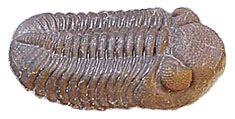Adventures on Earth column for August 25, 2010
By George E. Beetham Jr.
Arctic sea ice has been melting during the summer of 2010 at near the record rate set in 2007. With about a month left in summer, this year could still set a new record.
Scientists have discovered that Arctic sea ice melts not from the top down, but from the bottom up. This means the temperature of the water is a larger factor than the temperature of the air above.
It also means the Arctic Ocean as a whole is quickly becoming warmer, and that spells trouble for species that depend on sea ice for their existence.
And that list of creatures is a lot larger than just polar bears and seals.
Indeed, creatures at the very base of the food chain will be affected as sea ice melts. Tiny crustaceans feed on algae under the sea ice. These creatures in turn feed larger predators, all the way up to seals, whales, and polar bears.
This alarming news is contained on a Planet Green Channel documentary, “Oceans Blue – Arctic Ocean,” that aired over the weekend. The cable network will rebroadcast the show at 5 p.m. Friday, 5 p.m,. Saturday, and 8 p.m. Sunday.
The Oceans Blue series is hosted by Philippe and Alexandra Cousteau.
Their work simply adds to alarming news about the Arctic this summer.
● Oceanographers have found that the thickest sea ice, which formerly formed the core around which sea ice reformed during autumn in the Arctic, is floating into warmer waters and it, too, is melting.
● The near record melting this summer follows a late-winter freeze that scientists thought would presage a cooler summer. Instead, it is warmer.
● Forest fires in Russia are affecting ice melt, adding to greenhouse gases and giving off smoke and soot that darken ice.
● Methane hydrates are melting more rapidly than predicted, releasing methane into the atmosphere where it acts as a greenhouse gas.
Sea ice, according to the Oceans Blue documentary, forms at a lower temperature than fresh water ice. As it freezes, it gives off salt, which increases the salinity of the unfrozen water.
Saltier water sinks, helping to drive the ocean currents that carry cold water southward and warm, less saline water northward.
It is this flow of water that helps regulate temperatures around the planet.
When it melts, sea ice is less saline than the ocean water below, so it does not sink. This, some oceanographers fear, could shut down the ocean currents.
If that happens, the Polar Regions would become much colder and a new ice age could set in.
But that would not take effect anytime soon. The immediate reality is that polar ice is melting faster than predicted, and this will affect not just Arctic wildlife, but life around the world.
Ocean levels are rising. They will rise faster as ice continues to melt. This, in turn, will inundate coastal areas that are now dry land.
During the Miocene, ocean levels were higher than they are today. Vast areas of New Jersey, the Delmarva Peninsula, and lands around the Chesapeake and Delaware Bays were under water.
The alarming news from the Arctic means those conditions are likely to return, perhaps within this century.

No comments:
Post a Comment